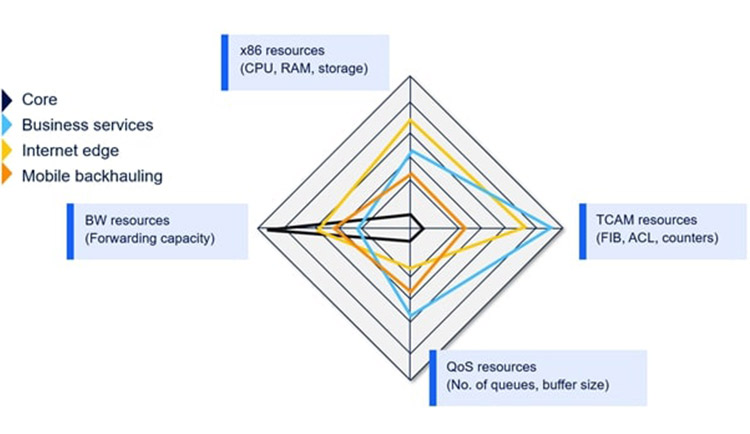However, network performance is vital for the telecommunications industry, as it allows operators to increase their understanding and knowledge of CUPS and focus on the Network Plan. This highlights the fundamental difference between Control Plane and Data Plane.
Although the Control Plane does not carry a significant amount of traffic, it does require a substantial amount of computing resources. This becomes even more critical as the number of network connections managed by IoT services such as mMTC and Industry 4.0 increases. In contrast, the Data Plane requires fewer computing resources and more network resources.
The increasing need for network resources leads to problems in various fields. Transferring network functions to a public, private, or hybrid cloud makes sense at the control plane because the cloud provides precisely the same computing and storage resources. When it comes to the data plane, performing such functions on a computing-based infrastructure, such as a VNF on a server or a CNF on a cloud, is not easy.
While VNFs remove constraints by implementing network performance on a standard, scalable, and integrated hardware infrastructure, they cannot quickly deploy and scale network functions across multiple sites. Creating a network site requires a significant investment in IT infrastructure and prevents the scaling and use of VNFs.
As the next step in evolving network functions, CNFs make it possible to implement network functions flexibly, as they can run in containers and on any cloud infrastructure, effectively increasing the scalability of services. But this is inefficient and will impose costs on organizations. Server-based cloud architecture uses CPUs and GPUs, which ultimately leads to poor performance and service quality.
NPUs can meet the needs of network functions. However, the platforms they support (primarily routers) are proprietary and closed and do not have any APIs or abstract layers required to run network services microservices.
The best solution to these problems is a software-based and cloud-based architecture that combines CPU and NPU to meet network needs. By implementing network functions on the cloud, operators can implement functions that require network resources and infrastructure (CPUs and NPUs).
DriveNets's NCNF solution adapts the cloud architecture model to telecommunications networks. Network Cloud is a cloud-native software that runs on shared physical infrastructure and substantially simplifies network operations to reduce telecommunications costs.
In the figure below, you can see that network services require different resources:
By sharing resources, infrastructure resources can be used optimally, and the quality of services can be significantly increased. On the other hand, it allows accurate integration of network functions with infrastructure and fine-tuning and optimizing network functions in real-time and based on various criteria.
Operators need to take steps to improve their networks and reap the benefits of low costs, flexibility, and innovation. The evolution of network functions has already begun and will undoubtedly continue at a faster pace.
- CUPS : Control-/User Plane Separation
- VNF : Virtual Network Function
- CNF : Container Network Function
- NPU : Network Processing Unit
- NCNF : Network Cloud-Network Function










